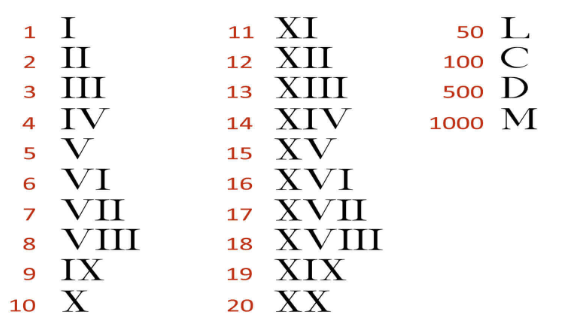Roman numerals are a fascinating system of numerical notation that dates back to ancient Rome. Although the use of Roman numerals has declined in modern times, they continue to hold historical and cultural significance. In this article, we explore the VII Roman numeral, uncovering its representation, historical context, and its presence in various aspects of contemporary life.

Understanding VII Roman Numeral
The VII Roman numeral represents the number 7 in the ancient Roman numeral system. Unlike the conventional Arabic numerals (1, 2, 3, etc.), Roman numerals employ combinations of letters from the Latin alphabet to symbolize numerical values. The basic Roman numerals and their corresponding values are as follows:
I – 1
V – 5
X – 10
L – 50
C – 100
D – 500
M – 1000
VII is formed by combining the letters V (5) and II (2). When a smaller numeral is placed before a larger one, the smaller value is subtracted from the larger value. In this case, V (5) comes before II (2), so you subtract 2 from 5, resulting in 3. The resulting III signifies the value of 3. Hence, VII represents 7.
Historical Significance of VII Roman Numeral
The Roman numeral system was widely used throughout the Roman Empire and beyond. It played a crucial role in various aspects of ancient Roman life, such as recording dates on buildings and monuments, counting the passage of years, and marking the order of events in historical records. Roman numerals also held religious significance in ancient Roman society, being used in religious ceremonies and symbols.
The Influence of VII Roman Numeral in Contemporary Life
While the Roman numeral system has largely been replaced by Arabic numerals for most practical purposes, it still finds its place in modern society in several contexts:
Clocks and Watches: Roman numerals are commonly used on clock faces, adding a touch of elegance and tradition to timepieces.
Movie and TV Show Titles: Roman numerals are frequently used in the titles of movies, TV shows, and sequels, giving them a classic and timeless appeal.
Chapters and Book Sections: Roman numerals are used to divide books into chapters and sections, preserving a traditional format.
Page Numbers: In certain documents and books, Roman numerals are used for prefaces, introductions, and other preliminary pages.
Conclusion
The VII Roman numeral holds a place of historical significance and cultural heritage. Its representation of the number 7 in the ancient Roman numeral system continues to resonate in various aspects of contemporary life. From its role in clock faces and book sections to its use in movie titles and beyond, the influence of Roman numerals endures, adding a touch of tradition and elegance to modern society.
Although the practical application of Roman numerals has diminished, their legacy lives on in the preservation of historical records, art, and architecture. Understanding the VII Roman numeral and its broader historical context enriches our appreciation for this ancient numerical system and its contribution to human civilization.


